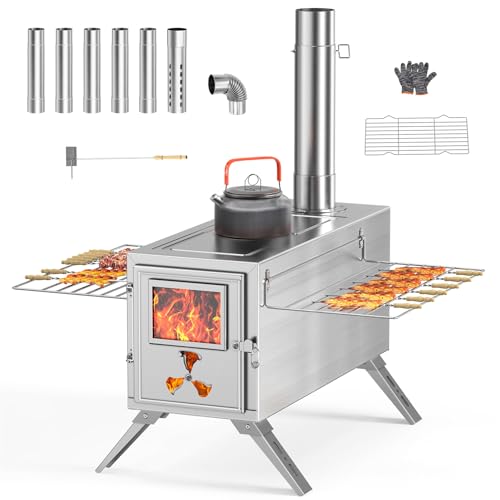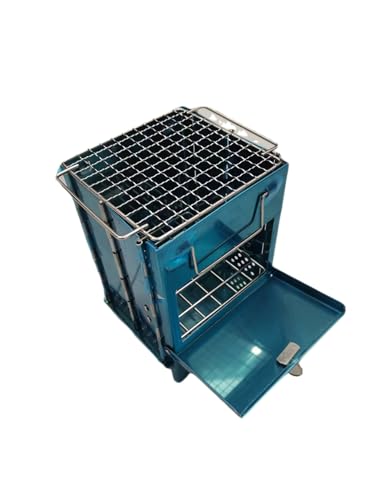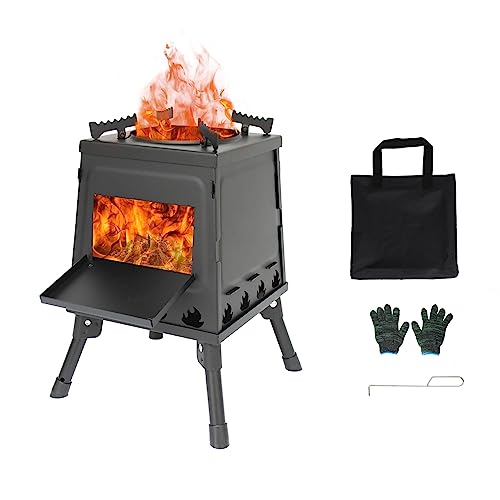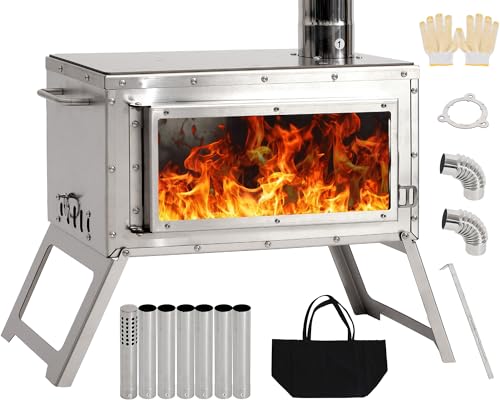Camping, the great escape into nature, is a cherished pastime for many enthusiasts. One essential item that can elevate this experience is the portable cast iron wood burning camping stove. These stoves provide warmth, facilitate cooking, and offer a rustic charm that enhances the camping experience. This guide explores the features, benefits, and considerations when selecting a portable cast iron wood burning camping stove, along with some frequently asked questions to help users make informed decisions.
What is a Portable Cast Iron Wood Burning Camping Stove?
A portable cast iron wood burning camping stove is a compact cooking appliance designed to burn wood as fuel. Typically made of durable cast iron, these stoves can withstand high temperatures, making them an excellent choice for outdoor cooking and heating during camping trips. They are specifically engineered for portability, featuring foldable legs and a manageable weight, allowing campers to transport them easily.
Benefits of Using a Portable Cast Iron Wood Burning Camping Stove
1. Durability
Cast iron stoves are known for their robust construction. They can endure the rigors of outdoor conditions, including exposure to moisture and fluctuating temperatures.
2. Effective Heat Retention
One of the significant advantages of cast iron is its ability to retain heat. This property allows the stove to maintain a consistent temperature for cooking, even after the fire has reduced.
3. Versatility
Portable wood burning stoves not only provide heat but can also be used for cooking a wide range of meals. From boiling water to frying fish, the possibilities are diverse.
4. Eco-Friendly Option
Using wood as fuel reduces reliance on fossil fuels, making wood-burning stoves an eco-friendly choice for camping. Additionally, employing fallen branches and twigs minimizes environmental impact.
5. Authentic Experience
There’s something rustic and fulfilling about cooking over an open flame. A cast iron stove offers an authentic camping experience that electric or propane stoves simply cannot replicate.
Considerations When Choosing a Portable Cast Iron Wood Burning Camping Stove
When selecting the ideal portable cast iron wood burning camping stove, a few factors should be considered:
1. Size and Weight
- Compactness: Choose a size that fits your camping style. If hiking to the campsite, weight matters. Opt for lightweight models with foldable or detachable components.
- Cooking Surface Area: Consider how many people will be cooking. Larger surfaces are beneficial for group camping.
2. Construction Quality
Evaluate the quality of the cast iron. Thicker materials will withstand heat better and last longer. Look for stoves with good welding and sturdy components.
3. Airflow Control
Proper airflow control features like adjustable vents can significantly enhance combustion efficiency, which is vital for optimal fuel use.
4. Assembly and Usability
Some stoves may require assembly, while others are ready to use right out of the box. Opt for models that are user-friendly, especially if cooking during inclement weather.
5. Price
While durable cast iron stoves can be an investment, prices can vary significantly. Evaluate the features in relation to the price to ensure you obtain value for money.
6. Brand Reputation
Research reputable brands with good customer reviews. Established brands often provide better customer support and warranties.
Top Features to Look For in a Portable Cast Iron Wood Burning Camping Stove
- Ash Pan: Helps with easy cleaning and maintenance.
- Grates: Enhances airflow to promote better combustion.
- Foldable Design: Facilitates easy transportation and storage.
- Multiple Cooktop Levels: Allows for cooking different types of food or using larger pots.
How to Use a Portable Cast Iron Wood Burning Camping Stove
Using a portable cast iron stove involves a few simple steps:
- Setup: Choose a flat, stable surface that is clear of debris. Assemble the stove if required.
- Fuel: Gather dry firewood. Strive for a mix of small kindling and larger logs to maintain the fire.
- Ignition: Place kindling and small twigs in the stove. Use fire starters or matches to ignite.
- Add Fuel: Gradually add larger logs as the fire gains strength. Monitor airflow controls for optimal combustion.
- Cooking: Once the stove reaches the desired temperature, place pots or pans on the cooking surface to start your culinary adventure.
FAQs about Portable Cast Iron Wood Burning Camping Stoves
1. Are portable cast iron wood burning camping stoves safe to use?
Yes, when used correctly and in a safe environment, these stoves provide a secure heat source. Always keep flammable materials at a safe distance and use the stove in well-ventilated areas.
2. Can I use a wood burning stove in wet conditions?
While it is possible, it is best to avoid using a wood stove in heavy rain. The moisture can affect fire performance and may make it difficult to ignite the kindling.
3. What type of wood is best for burning in these stoves?
Hardwoods like oak, hickory, and maple are ideal as they produce more heat and less smoke. Avoid burning treated wood or plastics, as they can release harmful chemicals.
4. How do I clean my portable cast iron stove?
After letting the stove cool completely, empty the ash pan. A wire brush or scraper can help remove any build-up on the surface. For deeper cleaning, a mixture of vinegar and water can help prevent rust.
5. Do portable wood burning stoves require much maintenance?
Generally, minimal maintenance is needed, but regular checks for rust and cleaning the ash can enhance longevity.
A portable cast iron wood burning camping stove is an invaluable asset for any camping enthusiast. By providing a reliable cooking source and warmth, these stoves enhance the outdoor experience while urging users to engage with their environment authentically. When choosing a stove, considering factors such as size, weight, construction quality, and usability will significantly impact satisfaction. With proper care and usage, a portable cast iron stove can serve as a lasting companion for countless adventures in the wilderness.






